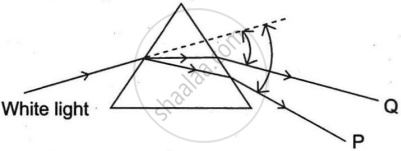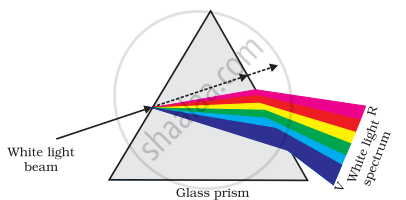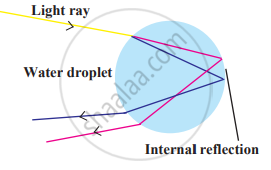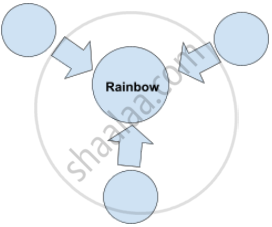Advertisements
Advertisements
Question
In the following diagram showing dispersion of white light by a glass prism, the colours 'P' and 'Q’ respectively are:

Options
Red and Violet
Violet and Red
Red and Blue
Orange and Green
Solution
Violet and Red
Explanation:
The splitting of white light into its constituent colours is known as light dispersion. The spectrum is the band of seven colours produced by splitting white light. All of the constituent colours of white light have the same velocity in vacuum, but their velocity changes when they pass through a transparent 'medium' like a glass prism. Different colours are diverted by different angles on the prism's initial face. Violet's minimum speed is deviated by the maximum angle, whereas red's maximum speed is distorted by the minimum angle. As a result, the letters 'P' and 'Q' are violet and crimson, respectively.

RELATED QUESTIONS
What happens when a ray of ordinary light is passed through a triangular glass prism?
Which of the following coloured light has the least speed in glass prism?
(a) violet
(b) yellow
(c) red
(d) green
What conclusion do you draw about the nature of white light in part (b)?
The frequency range of visible light is from 3.75 × 1014 Hz to 7.5 × 1014 Hz. Calculate its wavelength range. Take speed of light = 3 × 108 m/s.
An object is placed in front of a converging lens and in front of a diverging lens as in fig.

(a)Complete the ray diagram to obtain an image.
(b)Compare the nature of image formed by both the lenses in the above case.
A wave has wavelength 50Å of name the wave.
Distinguish between an impure spectrum and a pure spectrum.
Rainbow is a beautiful natural phenomenon. It is the combined effect of a natural three processes together produced by light. Write it into the circle.


What is dispersion? Explain in detail.
______ colour is deviated the least in the spectrum of white light obtained with a glass prism.
